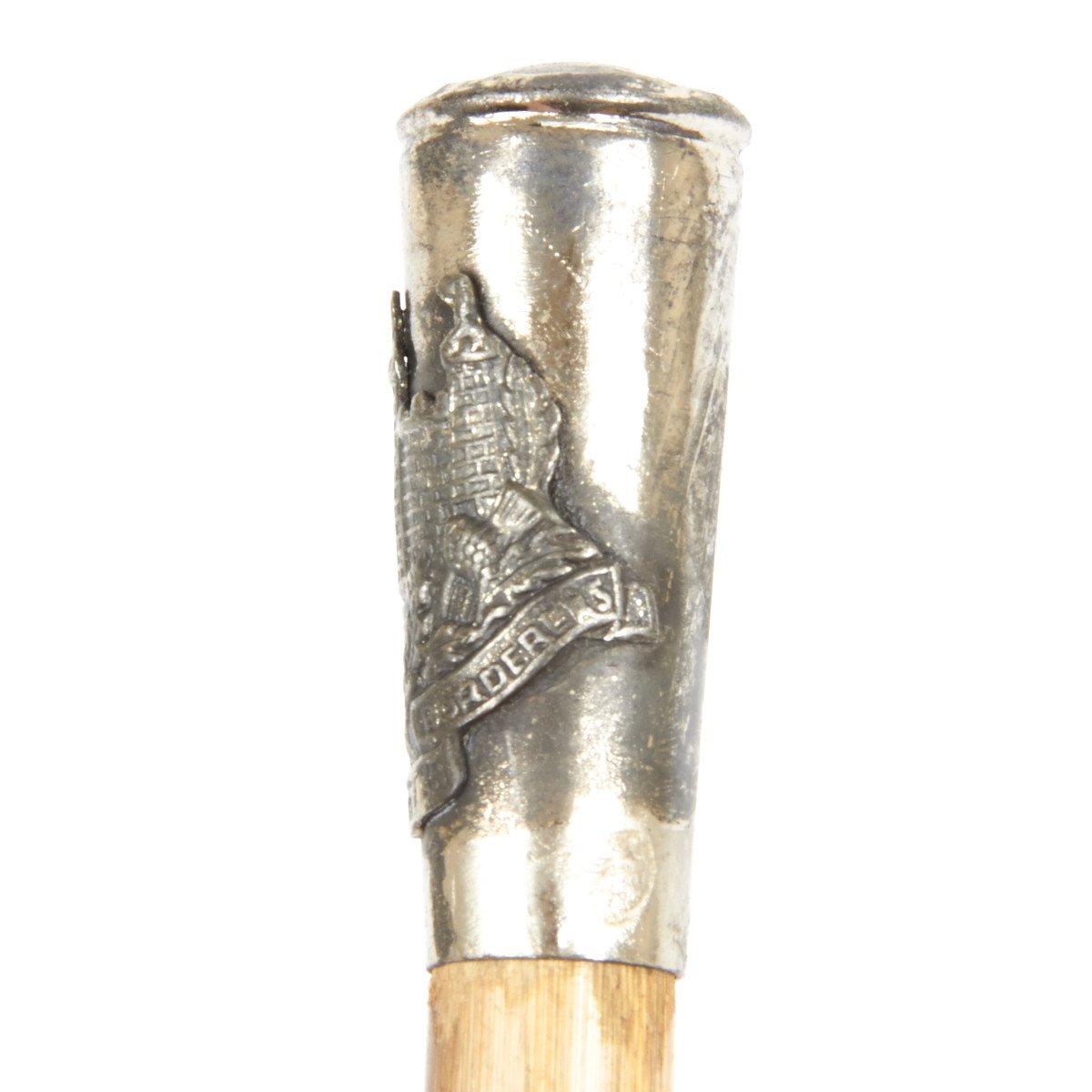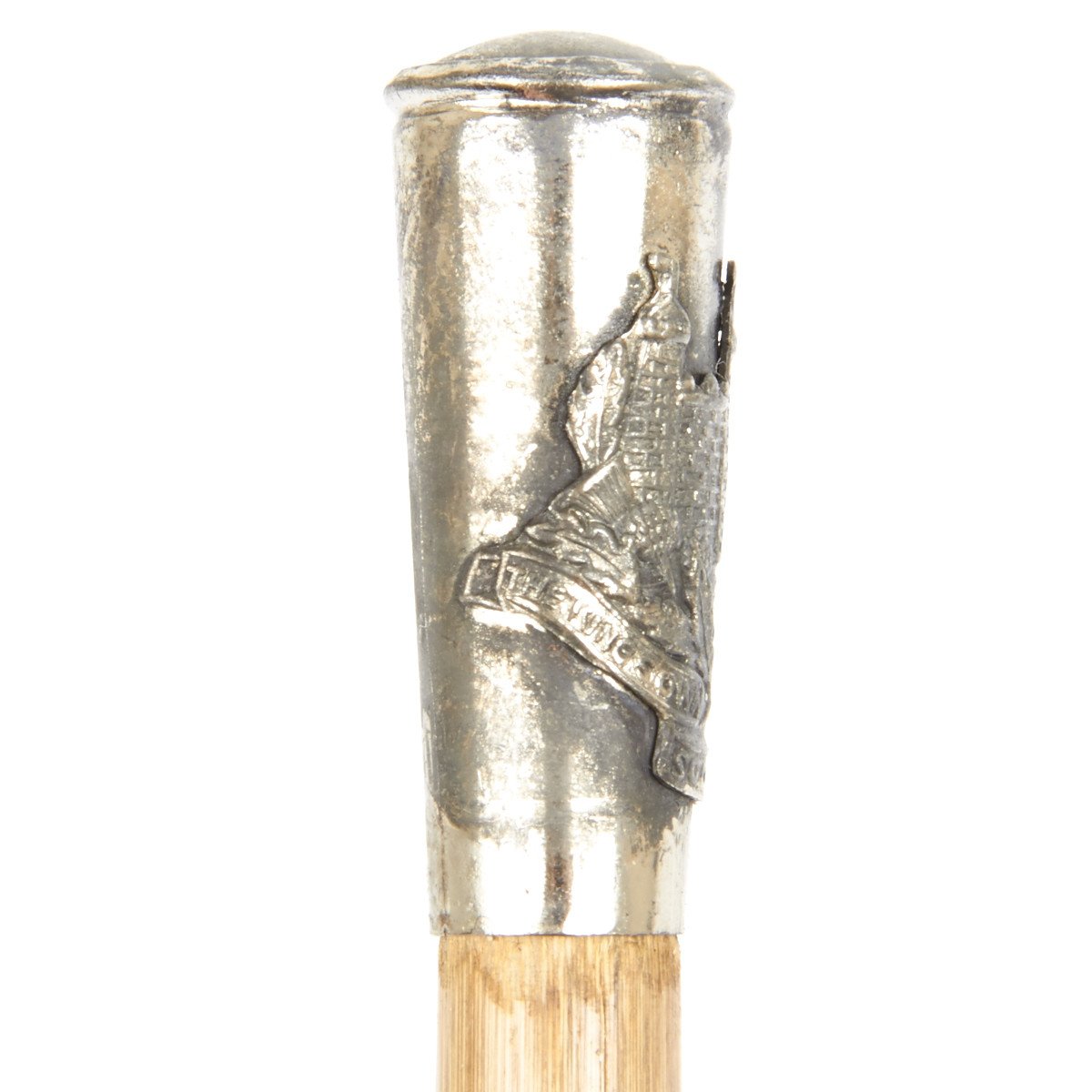British WWI Officer Regimental Swagger Stick- The King’s Own Scottish Borders New Made Items
$ 29,95 $ 17,97
New Made Item: A swagger stick is a short stick or riding crop carried by a uniformed person as a symbol of authority. A swagger stick is shorter than a staff or cane, and is made from rattan. British swagger sticks are often topped with a silver cap, bearing regimental insignia. A swagger stick remains an essential part of an officer’s equipment.
The King’s Own Scottish Borderers was an infantry regiment of the British Army, part of the Scottish Division. It was raised on 18 March 1689 by the Earl of Leven to defend Edinburgh against the Jacobite forces of James II. It is said that 800 men were recruited within the space of two hours. The Regiment’s first action was at the Battle of Killiecrankie on 27 July of the same year. Although this battle was a defeat for the Williamite army, the Jacobite commander, Viscount Dundee (Bonnie Dundee), was killed by a volley fired by Leven’s Regiment, bringing an end to James II’s attempt to save his throne. The Regiment was judged to have performed well and was granted the privilege of recruiting by beat of drum in the City of Edinburgh without prior permission of the provost.
For a period it was known as Semphill’s Regiment of Foot, the name under which it fought at the Battle of Culloden in 1746. When the British infantry were allocated numerical positions in the ‘line’ of Infantry the regiment was numbered 25th Foot (based on its formation date) in 1751. The Regiment fought at the Battle of Minden on 1 August 1759 with five other regiments; this battle honor was celebrated by the Regiment each year on 1 August. The 25th was the county regiment of Sussex from 1782 to 1805, before its recruiting area was moved to the Scottish Borders region. From then it was known as the King’s Own Borderers, becoming the King’s Own Scottish Borderers in 1887.
The Regiment was affectionately known by the Scottish public as the “Kosbies” but this term was never used within the Regiment. The regiment saw service during both World Wars.
Swagger Stick Length varies: approximately 27-28″ long.
Prompt Shipping and Professional Packaging
We provide a variety of shipping options due to our long-running partnerships with UPS, FedEx and DHL. Our warehouse personnel are well trained and will pack the goods according to our exact and precise specifications. Before shipping your items will be thoroughly inspected and secured. Every day, we deliver to thousands of customers in different countries. This is a sign of our determination to become the largest online retailer worldwide. Both Europe as well as the USA have warehouses and distribution centers.
Note that orders containing more than one item will be subject to a processing period that is based to the particular item.
Prior to shipping the items, our staff will carry out an exhaustive inspection of the products you ordered. Today, most orders will be delivered within 48 hours. The estimated delivery time is between 3-7 days.
Returns
The stock is constantly changing. It's not entirely managed by us since we are involved with multiple entities, including the factory and our storage. Therefore, the actual inventory could alter at any time. It is possible that you will not receive your order after the order has been made.
The period of time is 30 days. Unfortunately, if 30 days have passed since you purchased your product, we are unable to provide a refund or exchange.
The item must not be in use and must be in the original packaging. The item must be in the original packaging.
Related products
Uncategorized
Uncategorized
Uncategorized
Australian WWII Owen MK1 Machine Carbine SMG Custom Fabricated Replica with Sling Original Items
Uncategorized
Uncategorized
Uncategorized
Uncategorized
Uncategorized
Uncategorized
Uncategorized
Uncategorized
Angolan Rebel 1970s era 60mm Inert Display Mortar from Angolan Civil War Original Items
Uncategorized
Armoured Fighting Vehicles of the World: AFVs of World War One (Hardcover Book) New Made Items
Uncategorized
Uncategorized
Uncategorized
Uncategorized
Uncategorized
Uncategorized
Uncategorized
Uncategorized
Uncategorized












































































